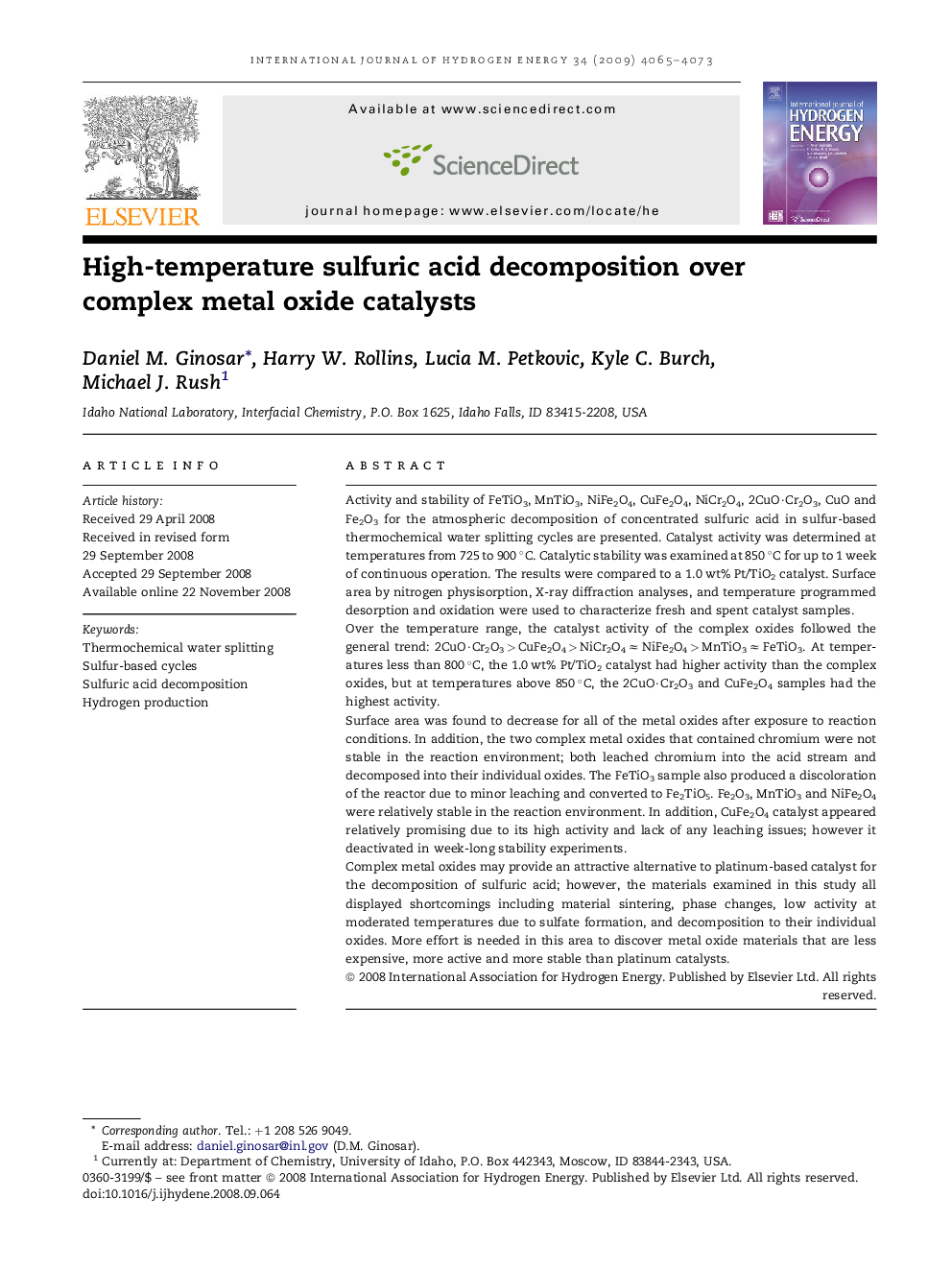| کد مقاله | کد نشریه | سال انتشار | مقاله انگلیسی | نسخه تمام متن |
|---|---|---|---|---|
| 1279042 | 1497633 | 2009 | 9 صفحه PDF | دانلود رایگان |

Activity and stability of FeTiO3, MnTiO3, NiFe2O4, CuFe2O4, NiCr2O4, 2CuO·Cr2O3, CuO and Fe2O3 for the atmospheric decomposition of concentrated sulfuric acid in sulfur-based thermochemical water splitting cycles are presented. Catalyst activity was determined at temperatures from 725 to 900 °C. Catalytic stability was examined at 850 °C for up to 1 week of continuous operation. The results were compared to a 1.0 wt% Pt/TiO2 catalyst. Surface area by nitrogen physisorption, X-ray diffraction analyses, and temperature programmed desorption and oxidation were used to characterize fresh and spent catalyst samples.Over the temperature range, the catalyst activity of the complex oxides followed the general trend: 2CuO·Cr2O3 > CuFe2O4 > NiCr2O4 ≈ NiFe2O4 > MnTiO3 ≈ FeTiO3. At temperatures less than 800 °C, the 1.0 wt% Pt/TiO2 catalyst had higher activity than the complex oxides, but at temperatures above 850 °C, the 2CuO·Cr2O3 and CuFe2O4 samples had the highest activity.Surface area was found to decrease for all of the metal oxides after exposure to reaction conditions. In addition, the two complex metal oxides that contained chromium were not stable in the reaction environment; both leached chromium into the acid stream and decomposed into their individual oxides. The FeTiO3 sample also produced a discoloration of the reactor due to minor leaching and converted to Fe2TiO5. Fe2O3, MnTiO3 and NiFe2O4 were relatively stable in the reaction environment. In addition, CuFe2O4 catalyst appeared relatively promising due to its high activity and lack of any leaching issues; however it deactivated in week-long stability experiments.Complex metal oxides may provide an attractive alternative to platinum-based catalyst for the decomposition of sulfuric acid; however, the materials examined in this study all displayed shortcomings including material sintering, phase changes, low activity at moderated temperatures due to sulfate formation, and decomposition to their individual oxides. More effort is needed in this area to discover metal oxide materials that are less expensive, more active and more stable than platinum catalysts.
Journal: International Journal of Hydrogen Energy - Volume 34, Issue 9, May 2009, Pages 4065–4073